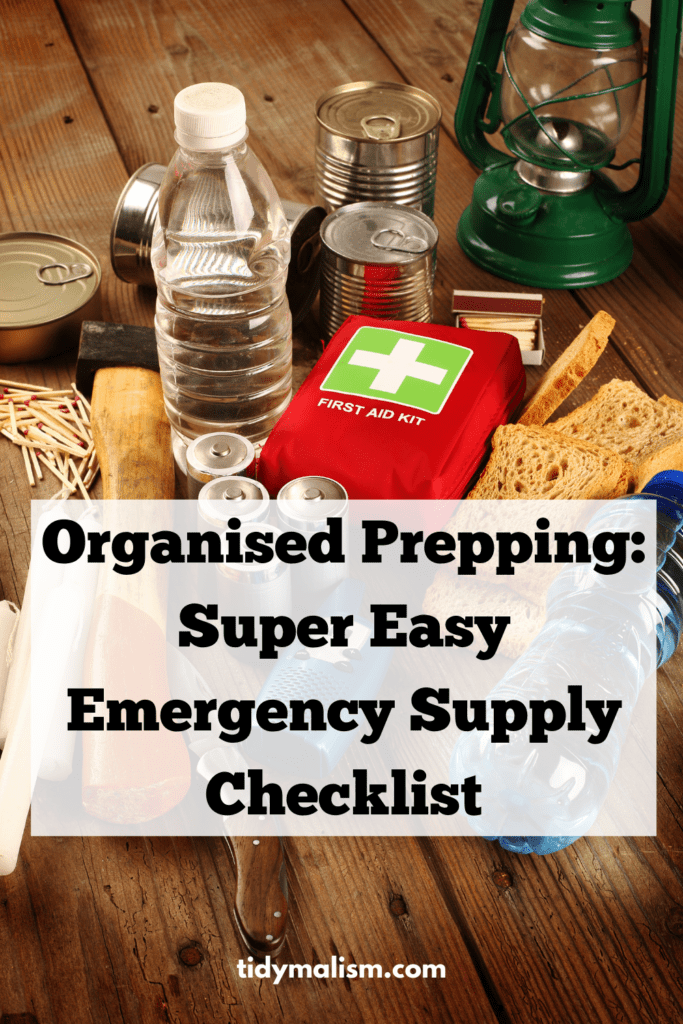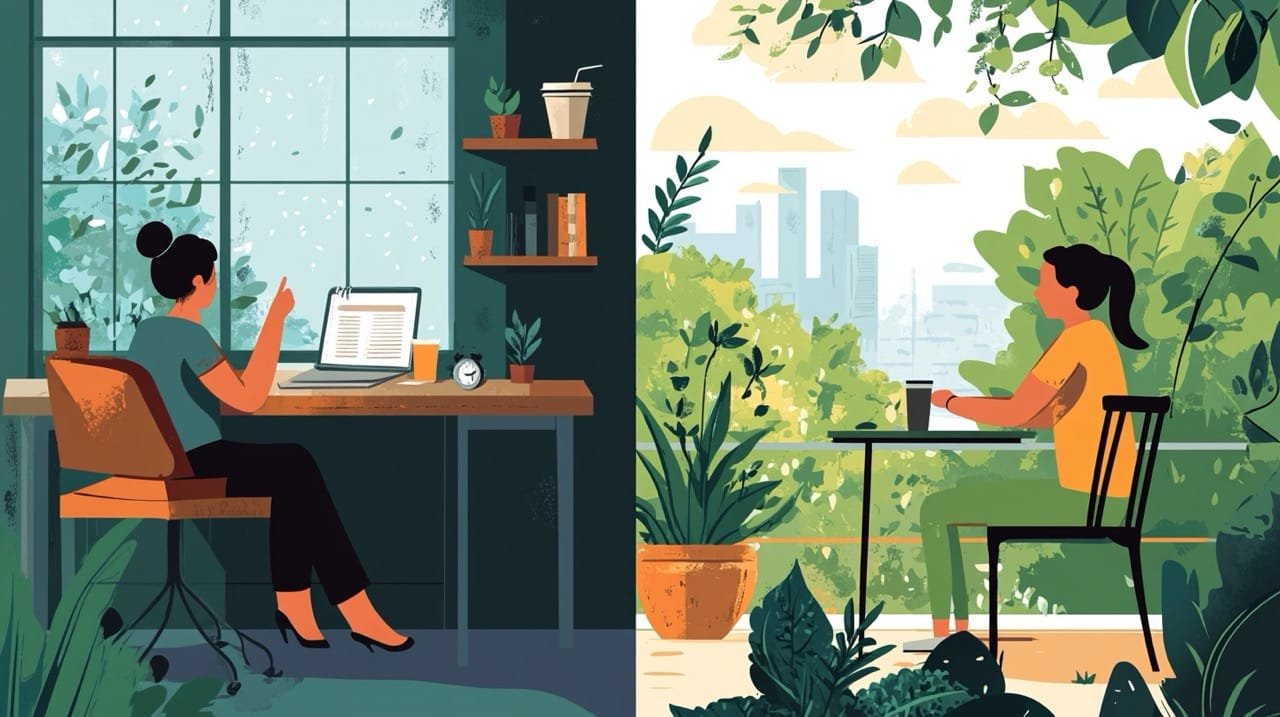We all know we’re supposed to keep a stock of emergency supplies on hand at home. But how many of us really do? Putting together an emergency supply kit is a task that can feel overwhelming. What supplies do we need? How much of everything? For how long?
This post will walk you through an easy basic emergency supply checklist. You’ll gain a better understanding of what you should ideally have on stock, and peace of mind knowing that you have the basics covered for an emergency situation.
Why to Keep Emergency Supplies on Hand
The past couple of years have shown us all too well that things are changing. We’ve been witness to erratic weather disasters in many parts of the world, seen entire cities banished to lockdown, watched with horror how fire and smoke took over the US west coast, and learnt that hackers are setting their sights on sabotaging entire electric grids.
I’m not here to preach the Apocolypse or spread doomsday vibes. And you don’t need to stockpile toilet paper and noodles, either! I do, however, believe it’s good sense to have some basic utilitarian items, water, and food rations on hand at home. The world we live in is simply becoming more unpredictable.
It’s easier than you may think to put together a kit of supplies which can get you through a bad patch of disrupted supply chains, a flood or storm, or even an unexpected mandated quarantine.
The below emergency supply checklist is based on a variety of governmental recommendations found online, and provides you all the basics on a per person basis. You can supplement these as desired for your personal household or circumstances. For multi-member households, simply multiply the quantities by the number of people in your household.
I don’t have children, but I used to be a child myself and know how hungry they can get! I suggest halving the below adult food rations for each child under the age of 12 if you have you kids in your household. Kids in puberty and older will likely need the full adult ration.
Where to Buy Emergency Supplies
Where should you get all the basics listed in this emergency supply checklist? Quite simply: all the usual places you shop at! Everything on this list can be found with your local grocer’s or supermarket, favourite big retailer, online discounter, chemist and pharmacy.
For my own emergency supply kit, I ordered all of my non-food items from Amazon. That was the easiest and most inexpensive option. Wherever possible below, I’ll link to my best Amazon choices, which you might like to add to your own list or shopping basket.
This basic emergency supply checklist is comprised of foodstuffs, water, medical items, hygiene products, and some basic gear for fire protection and potential power outages. These items should enable a household to survive a crisis or dangerous situation for about ten days without having to go shopping. Plus, having the items from this emergency supply list on hand also serves to counteract public hoarding during an actual crisis.
When to Buy Emergency Supplies
If you’re wondering how and when to ideally buy everything on this emergency supply checklist, rest assured that you can do it gradually.
Integrate the items on this list into your everyday shopping routine per your usual pattern of consumption. This has a two-fold advantage. For one, you’ll be continually using and replenishing your emergency foods, which means that nothing will go bad. Second, you won’t be burdened with the physical and financial strain of having to get everything at once.
Basic Emergency Supply Checklist
The following checklist provides an example of a ten-day basic supply for one adult person. This corresponds to roughly 2,200 calories per day, which covers the average total energy requirement for an adult human.
Food and Beverages
- 15 litres of drinking water (1.5 litres per day, per person)
- 5 litres of water (0.5 litres per day, per person, for the preparation of food independent of the public drinking water supply)
- 3.5 kilograms of simple carbohydrates (e.g. bread, potatoes, pasta, cereals, rice)
- 4 kilograms of vegetables
- 2.5 kilograms of fruit and nuts (peanuts are NOT nuts! Macadamia are the most nutritious and I recommend those)
- 2.4 kilograms of dairy products (or non-dairy, sugar-free, calcium-enriched substitutes like almond, coconut or hemp milk products)
- 1.5 kilograms of protein (e.g. fish, meat, eggs or whole egg powder)
- 0.5 kilograms of natural, healthy fats and oils (coconut oil, butter, macadamia nut oil, avocado oil)
- Other items as desired (e.g. tinned herring, honey, liverwurst, orange juice, sandwich spreads, dark chocolate, biscuits, pretzels, etc.)
Storage Tips
Fruit and vegetables in tins or jars are best for longer storage. Fresh eggs and most dairy products, as well as fish and meat, can only be stored for a limited time, whereas whole egg powder or canned fish can be kept for several years.
Tinned vegetables and legumes are already cooked. If you opt for dried pulses, for example, keep in mind that you will need additional water for cooking. And even if you usually don’t eat processed foods, I strongly recommend opting for at least some ready-made meals like tinned ravioli, goulash, or stews for the sake of practicality. They can be stored for a very long time.
Your emergency food supplies should be stored in a cool, dry place. If you’re not using and replenishing them on a regular basis, make sure to check your stash every so often for pests and expiry dates. Keep products with the longest shelf life at the back of your shelf or pantry, and those due to expire soon at the front.
Hygiene Products
In addition to sufficient food and water, which are undoubtedly the most important items in your emergency supply kit, basic hygiene items are also important for your kit. Have these basics on hand to get you through ten days:
- Bar of soap
- Liquid soap
- Washing detergent
- Menstrual cup (or pads) & intimate wipes
- Toothbrush and toothpaste
- Paper towels
- Toilet paper
- Bin liners
- Household gloves
- Disinfectant
Medicine Cabinet Essentials
A well-stocked medicine cabinet is also indispensable in an emergency. Depending on any illnesses, conditions or allergies you have, you can expand on the following list as needed:
- First-aid kit
- Medication prescribed by your doctor
- Ibuprofen
- Skin disinfectant
- Hydrogen peroxide 3% (can be used as a wound disinfectant, skin cleanser, mouthwash for swollen gums, etc.)
- Cold remedies (lozenges, bronchial tea, etc.)
- Thermometer
- Diarrhoea remedy
- Sunburn ointment
- Calamine lotion
- Splinter tweezers
Miscellaneous Gear for Your Emergency Kit
- Candles & tea lights
- Matches, lighters
- Torch
- Spare batteries
- Camping cooker with fuel
- Blankets & thermal underwear for cold weather conditions
- Fire extinguisher
- Emergency radio
- Solar powerbank for your smartphone
- Can opener
- Swiss army knife
- Pocket knife
- Protective mask or respirator
- Some cash so you’re independent of ATMs
Pets
This list did not cover pet supplies, but if you have pets, you’ll want to assess what they need to get through ten days with you in an emergency situation. Make sure you have their basics covered:
- Pet food
- Water
- Medication
- Blanket
Females Living Alone
As a last, but not least mention I want to include two additional items every woman living alone should have at hand. Not to instill fear in my female readers, but to be realistic. Life is strange enough when we’re not going through a crisis. For self-protection these two items can be very helpful:
Once you’ve put together your emergency stock of supplies, you might be wondering what how to store it all, especially if you have no pantry. In a future post we’ll look at how to organise emergency supplies. Do leave a comment if you have any tips!















Leave a Reply